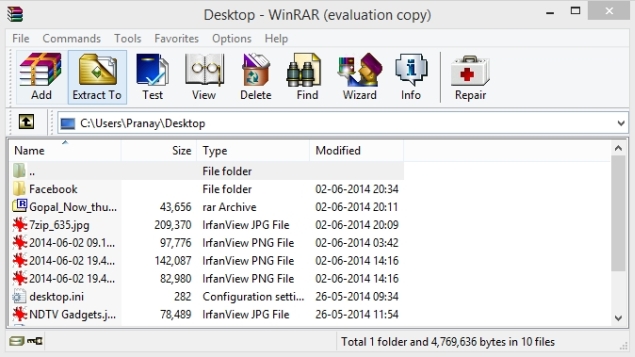Terminal For Mac
- Terminal For Mac Os
- Terminal For Mac Tutorial
- How To Open Folder In Terminal For Mac
- Terminal For Mac Commands
Requirements
Terminal provides a command line interface to control the UNIX-based operating system that lurks below macOS (or Mac OS X). Here's everything you need to know about Terminal, and what it can do. Terminal is a Mac command line interface. There are several advantages to using Terminal to accomplish some tasks — it’s usually quicker, for example. In order to use it, however, you’ll need to get to grips with its basic commands and functions.
You have assembled your Arduino* expansion board or your mini breakout expansion board, installed the appropriate drivers, and flashed the OS image (formerly called firmware).
Steps to Set Up a Serial Terminal
Terminal For Mac Os
- Terminal is a native cocoa graphical user interface application shipped as part of OS X. Terminal is the Mac application used to interact with the Unix shell which is by default and most typically the bash shell.
- Terminal program is a utility few Mac owners would use regularly, it is usually buried in the depths of the OS X. Typing cryptic instructions in a command line does not seem to be everyone’s cup of tea, although in reality it is not as difficult as it seems to be.
- The default Terminal app on macOS works just fine, but it’s far from the only option available. Whether you’re looking for something with more features, something more customizable, or just something that looks cool, you’ve got a lot of options. These aren’t your only alternative terminal.
- Launch Spotlight by pressing Cmd + Space.
- Type
terminal. - Select the Terminal app.
- In the Terminal window, enter the command:
ls /dev/cu.usbserial-*Nov 15, 2013 Top community discussions about PDFwriter. PDFwriter is a printer driver for OS X, which will let you generate PDF files by simply printing. PDFwriter is heavily based on, but far superior to, CUPS-PDF. It doesn't use ghostscript to generate PDF files; instead it uses the OS X internal PDF capabilities. Jun 18, 2016 PDFwriter is a printer driver for Mac OS X, which will let you generate PDF files by simply printing. PDFwriter is heavily based on CUPS-PDF. It doesn't use ghostscript to generate PDF files, instead it uses the Mac OS X internal pdf capabilities. Pdf writer for mac driver.
- In the list of connected devices, look for a device that contains cu.usbserial. In the example above, the device name is /dev/cu.usbserial-A402YSYU.
Note: If your device is not in the list, verify that your board is powered on and connected to your system. Select the appropriate link below: - Assembling the Intel® Edison board with the Intel® Edison mini breakout board
- Assembling the Intel® Edison board with the Intel® Edison mini breakout board
- Connect to the USB serial device using the Terminal screen utility by entering the command:
screen /dev/xx.usbserial-XXXXXXXX 115200 –Lwhere
/dev/xx.usbserial-XXXXXXXXis replaced by your device unique name. Using the example above, the command would be:BetterZip is not a replacement for a real ePub editor, but since ePub files are really just special zip files, why not use BetterZip to peek into or even modify them.

screen -L /dev/cu.usbserial-A402YSYU 115200 –LNote: Adding –L to the command, as shown above, turns on output logging so you can see the results of your commands. To end a session in Screen type Ctrl + A and then Ctrl + K to kill the session. You will be prompted to end the session. - At the blank screen, press Enter twice. A login screen is displayed.
- At the login prompt, type
rootand press Enter. - Press Enter when prompted for a password. The following screen is displayed:
You have now established a serial communication with your board. You can interact with your board by entering common Linux commands. For a summary of useful commands, see Common commands for the Intel® Edison board.
Terminal For Mac Tutorial
To make a secure connection (SSH) for Mac the following has replaced the previous utility. This 'telnet' utility is called 'Terminal' and it is native or built into the newer Mac operating system Mac OS 10 and above. To use 'Terminal' follow the steps below:
Make Secure Telnet Connections with Terminal
How To Open Folder In Terminal For Mac
Connect Via SSH:
- Open the Terminal application: in the [Applications > Utilities folder]
- Click the Terminal icon
- From the Shell menu, select New Remote Connection..
- Click Secure Shell (ssh) in the Service column.
- In the blank field at the bottom of the Connect to server window, enter the hostname or IP address of the server you wish to connect to (e.g., gold.clarion.edu)
- Enter your user id in the User: field, and click Connect.
- You will then be prompted for your password to login to 'Gold'.
To Save Your SSH Settings:
Terminal For Mac Commands
- Start the Terminal application
- Open the Connect to server window, as described in steps 1-3 above.
- Click + under the Server column.
- Enter the hostname or IP address of the server you wish to connect to (e.g., gold.clarion.edu).
- Click OK
- Enter user ID in the User: field
- Click Connect and your information will be saved.